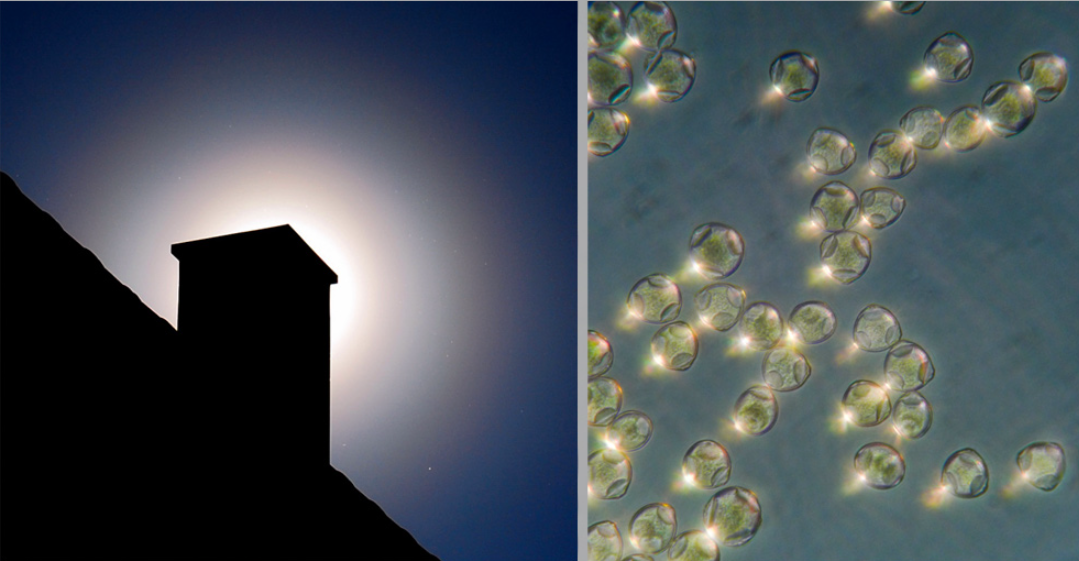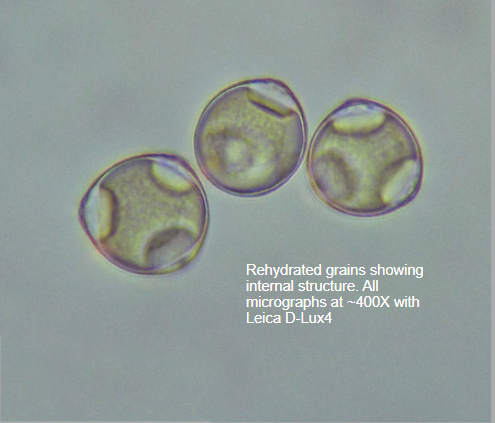First Cuckoo of Spring?
First Cuckoo of Spring: Exploring the Phenomenon of Pollen Coronae
As the seasons transition from winter to spring, nature unveils its captivating wonders. One such phenomenon that often marks the arrival of spring is the appearance of pollen coronae in the sky. These ethereal displays are formed when pollen grains scatter and diffract sunlight, creating a mesmerizing ringed corona. While many coronae are typically produced by cloud water droplets or ice crystals, pollen grains also have the ability to generate these stunning optical effects.
The Delicate Beauty of Pollen Coronae
When pollen grains float through a clear blue sky, they interact with sunlight in a unique way, resulting in the formation of pollen coronae. These coronae exhibit a range of colors, with rosy pinks and pastel straws bordering the inner white disk of the aureole. The first ring of the corona showcases cyans that gradually transition into greenish hues, rusts, and hints of purple towards the outer edge. This symphony of colors adds to the enchantment of this natural spectacle.
The Science Behind Pollen Coronae
The intricate patterns of pollen coronae arise from the scattering of light by the surface of the pollen grains. Each point on the particle skin scatters plane light waves, producing a set of outgoing spherical waves. When these waves overlap, they interfere with each other, resulting in regions of light and darkness known as the "near field." As these waves propagate to a long distance away, known as the "far field," they create the diffraction pattern that forms the corona.
Variations in Pollen Corona Shapes
Pollen coronae can exhibit a variety of shapes and patterns. In the case of hazel pollen, which is roughly spherical, the corona appears relatively circular. However, different types of pollen may have distinct features that affect their scattering behavior. Some pollen grains possess air sacs, enabling them to travel long distances through the wind. These air sacs cause the grains to orient themselves in specific ways, leading to asymmetric light scattering and the formation of non-circular coronae with bright regions.
Unlocking the Beauty Within: Rehydrated Pollen Grains
By examining rehydrated pollen grains under a microscope, scientists have gained insights into their internal structures. Micrographs reveal the intricate details of these tiny particles, providing a closer look at their composition and morphology. These investigations, often conducted at magnifications of around 400X, offer a deeper understanding of the characteristics that contribute to the formation of pollen coronae.
A Glimpse into the Past
It is worth noting that this article has been automatically converted from an older website and may not appear exactly as intended. However, it still offers valuable information about the captivating phenomenon of pollen coronae. For the original article, you can refer to the link provided.
Conclusion
As we eagerly await the arrival of spring, the first cuckoo of the season may not be the only sign that nature has to offer. The appearance of pollen coronae in the sky adds an extra touch of magic to this time of year. Understanding the science behind these optical phenomena allows us to appreciate the intricate beauty that surrounds us. So, keep your eyes on the sky and be ready to witness the enchanting dance of pollen grains as they create their captivating coronae.

First Cuckoo of Spring? ~ An early hazel pollen corona captured in Germany by Michael Großmann February 28, 2010. ©Michael Großmann.
Hazel Pollen ~ Micrographs by Eva Seidenfaden ( Paraselene Optics Site). Top image shows rehydrated grains. At right, fresh grains. ©Eva Seidenfaden.
Pollen grains floating in a clear blue sky have scattered and diffracted sunlight to form the delicate ringed corona. Rosy pinks and pastel straws border the inner white disk of the aureole. The first ring starts with cyans altering through greenish hues, rusts and hints of purple to the outer edge.
Most coronae are produced by cloud water droplets. Ice crystals also make them as can pollen grains, algae on pond surfaces or any reasonably monosized particle cloud. All but water droplets are semi or completely opaque but this does not matter because coronae result largely from light scattered by the particle surface.
Imagine, as in the diagram at right, plane light waves scattered from two points on the particle skin. Each point produces a set of outgoing spherical waves. Where the waves overlap they interfere. Where both wave crests coincide there is light. When the waves are out of phase there is darkness. This is the "near field". At a long distance away, the "far field", the result is the corona diffraction pattern.
Pollen corona can be quite non circular with bright regions. This early corona is not so because the hazel grains are roughly spherical. Some other pollen types have prominent air sacs to enable them to drift long distances in the wind. The sacs orient the grains and give rise to asymmetric light scattering.


Rehydrated grains showing internal structure. All micrographs at ~400X with Leica D-Lux4
Note: this article has been automatically converted from the old site and may not appear as intended. You can find the original article here.
Reference Atmospheric Optics
If you use any of the definitions, information, or data presented on Atmospheric Optics, please copy the link or reference below to properly credit us as the reference source. Thank you!
-
<a href="https://atoptics.co.uk/blog/first-cuckoo-of-spring-2/">First Cuckoo of Spring?</a>
-
"First Cuckoo of Spring?". Atmospheric Optics. Accessed on April 24, 2024. https://atoptics.co.uk/blog/first-cuckoo-of-spring-2/.
-
"First Cuckoo of Spring?". Atmospheric Optics, https://atoptics.co.uk/blog/first-cuckoo-of-spring-2/. Accessed 24 April, 2024
-
First Cuckoo of Spring?. Atmospheric Optics. Retrieved from https://atoptics.co.uk/blog/first-cuckoo-of-spring-2/.